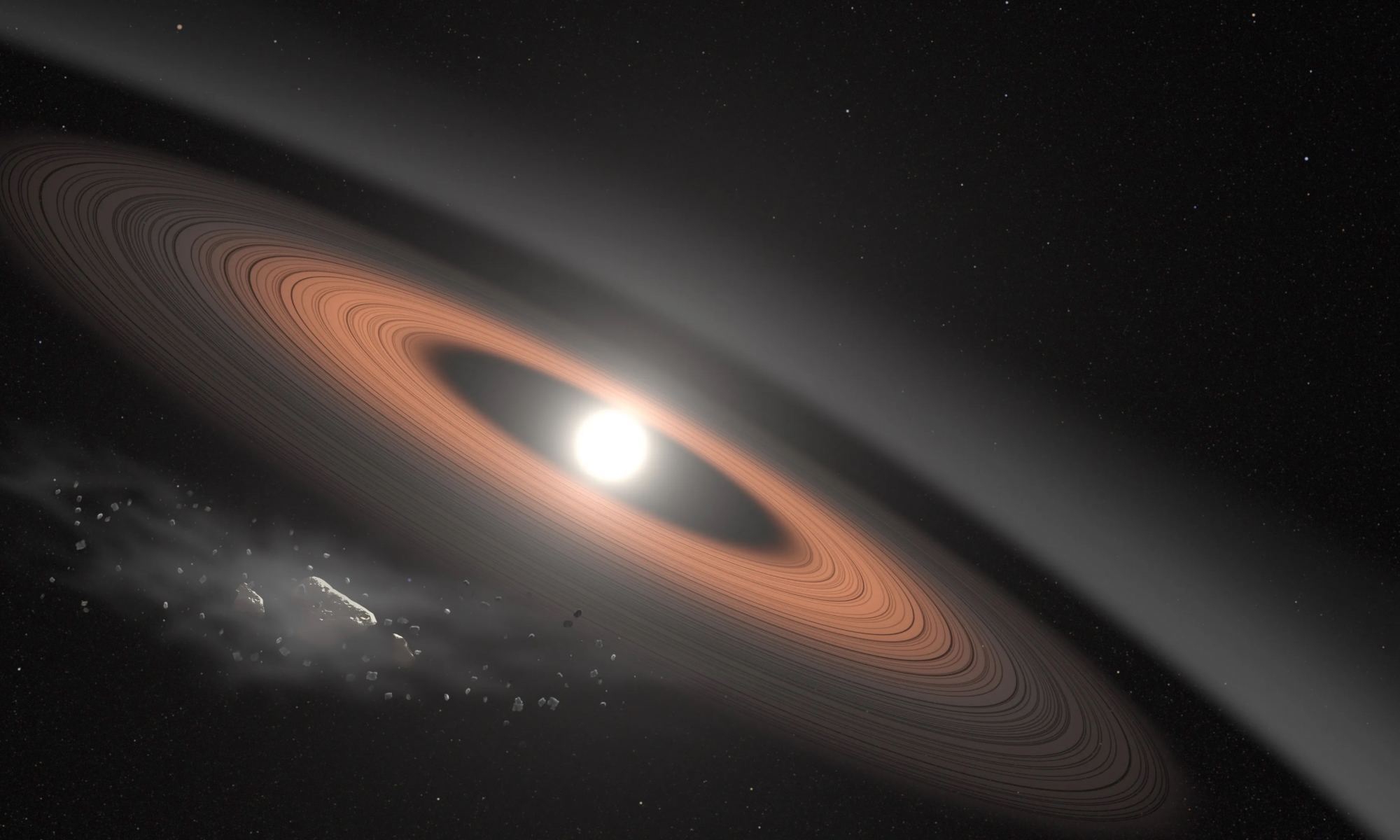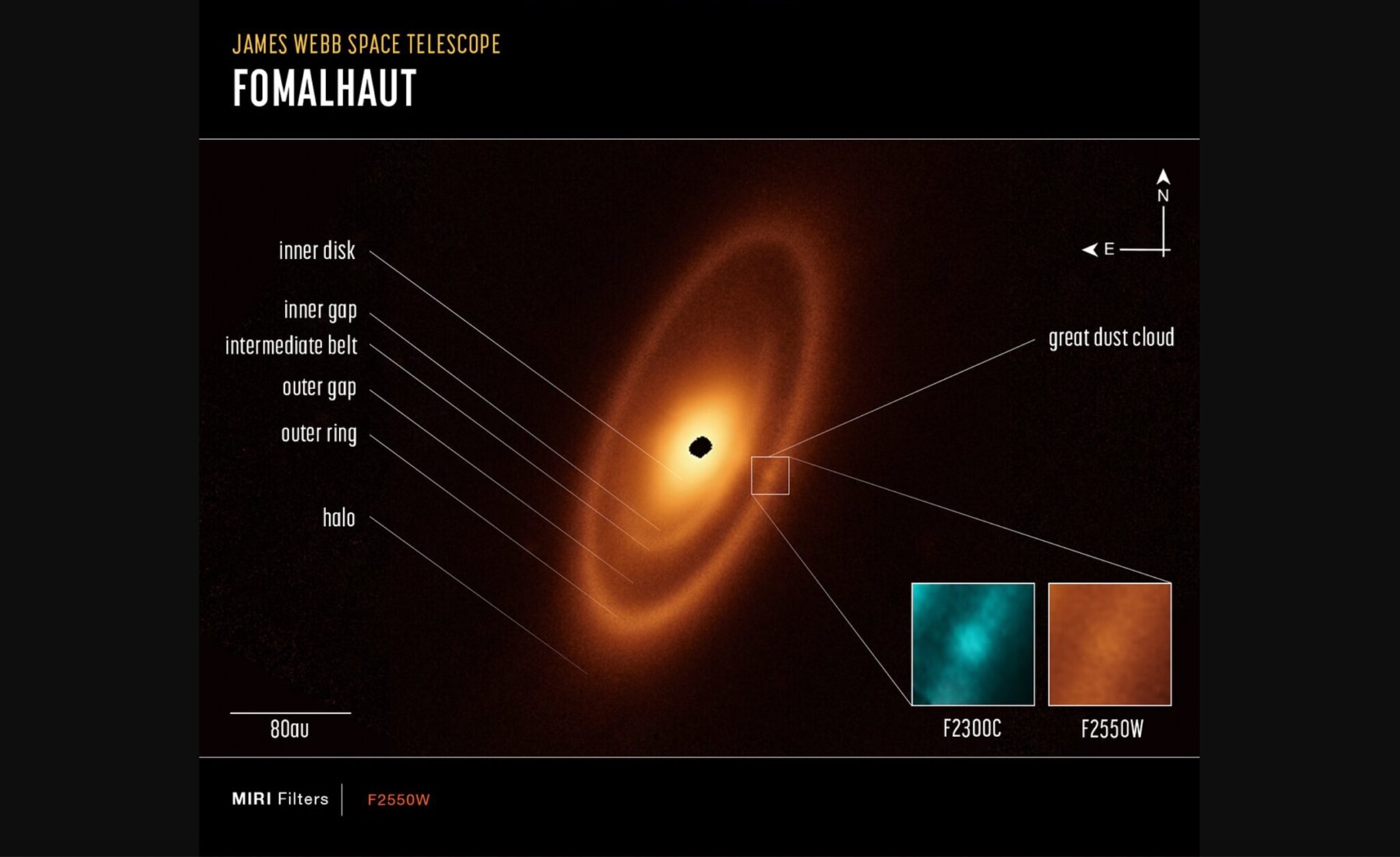Debris disks are a fairly common phenomenon in the Universe. Young stars have protoplanetary disks from which planets are formed. Black holes have accretion disks, which are the source of galactic jets. Supernova remnants can form disks around neutron stars. What about white dwarfs?

One might think that the debris disks of white dwarfs are a common phenomenon. After all, neutron stars explode with tremendous force, shedding most of the outer layers of the star, whereas white dwarfs are the remnants of red giant stars that inflate to form planetary nebulae. If neutron stars can hold enough material to create a debris disk, then surely a white dwarf can too. And it turns out that some white dwarfs do have a disk of debris. Several percent of white dwarfs have infrared radiation, indicating the presence of material around them.
Given the surface temperature and luminosity of white dwarfs, it may be difficult to study their debris disks in detail. Therefore, we know a little about the composition and formation of these discs. But that’s starting to change thanks to new observations of the white dwarf’s debris disk using the James Webb Space Telescope (JWST).
Mirror of the future of the Solar System
The observations concern a star known as WD 0145+234. In 2018, it experienced an infrared flare that originated from the fragmentation of an asteroid or comet orbiting a star. This is consistent with the idea that the accretion disks of white dwarfs are formed from the remnants of their star systems, such as planets and asteroids. New observations by James Webb confirm the existence of such a disk and the idea that they are formed as a result of collisions of bodies orbiting a star.

In particular, spectral observations show the presence of silicate grains, which are remnants of collisions. Silicates have been found around the white dwarf before, but these observations also indicate the presence of carbonates, which is particularly interesting. The result should be confirmed by additional observations, but if it is correct, it indicates that collisions of larger bodies contribute to the formation of the disk. Carbonates are formed when interacting with liquid water, so they must have formed inside bodies large enough to melt water ice. At least tens of kilometers in diameter. The bodies of the Solar System often contain carbonates, and since the Sun will eventually become a white dwarf, this suggests that the debris disks of white dwarfs are the result of the existence of similar planetary systems in the past.
The team continues to analyze the data to understand which observations may be most useful in the future.
Earlier we reported on how a white dwarf orbited a neutron star in just 50 minutes.
According to universetoday.com
Follow us on Twitter to get the most interesting space news in time
https://twitter.com/ust_magazine


